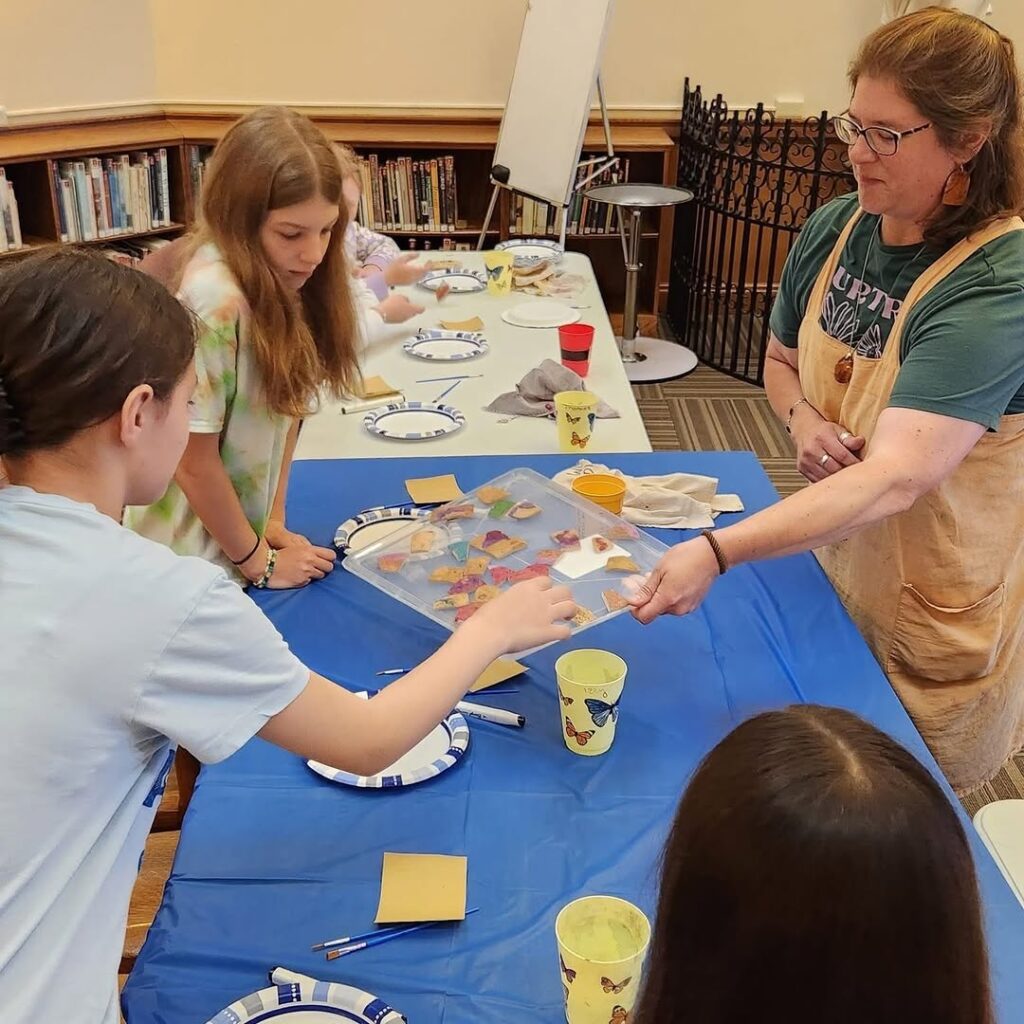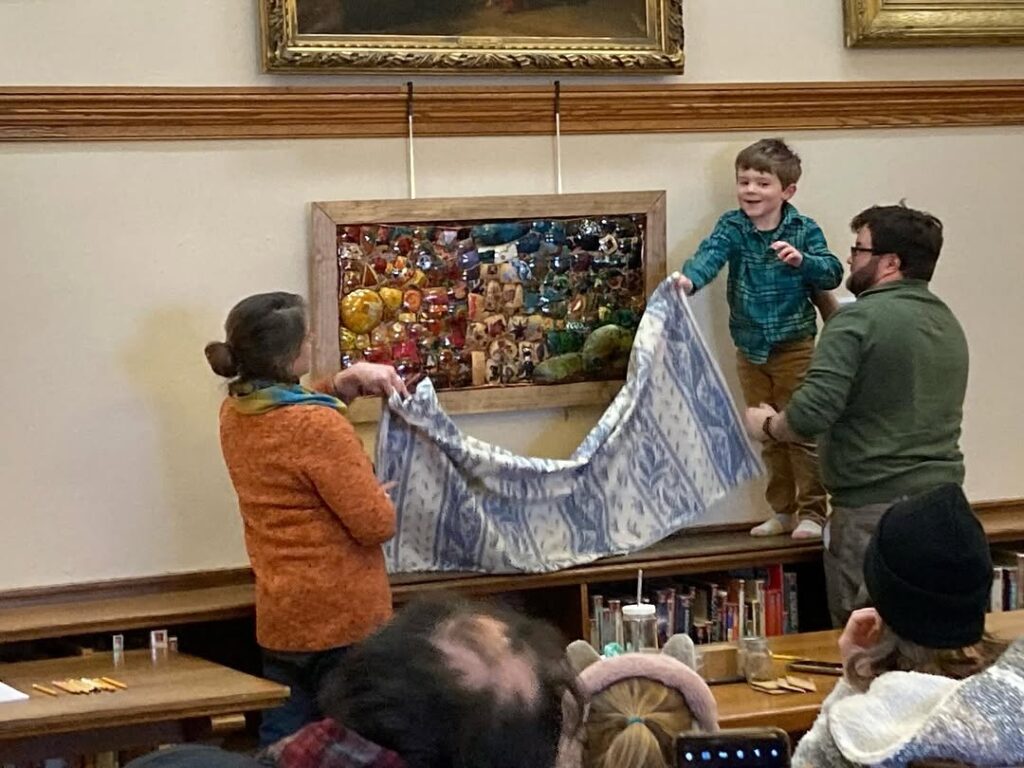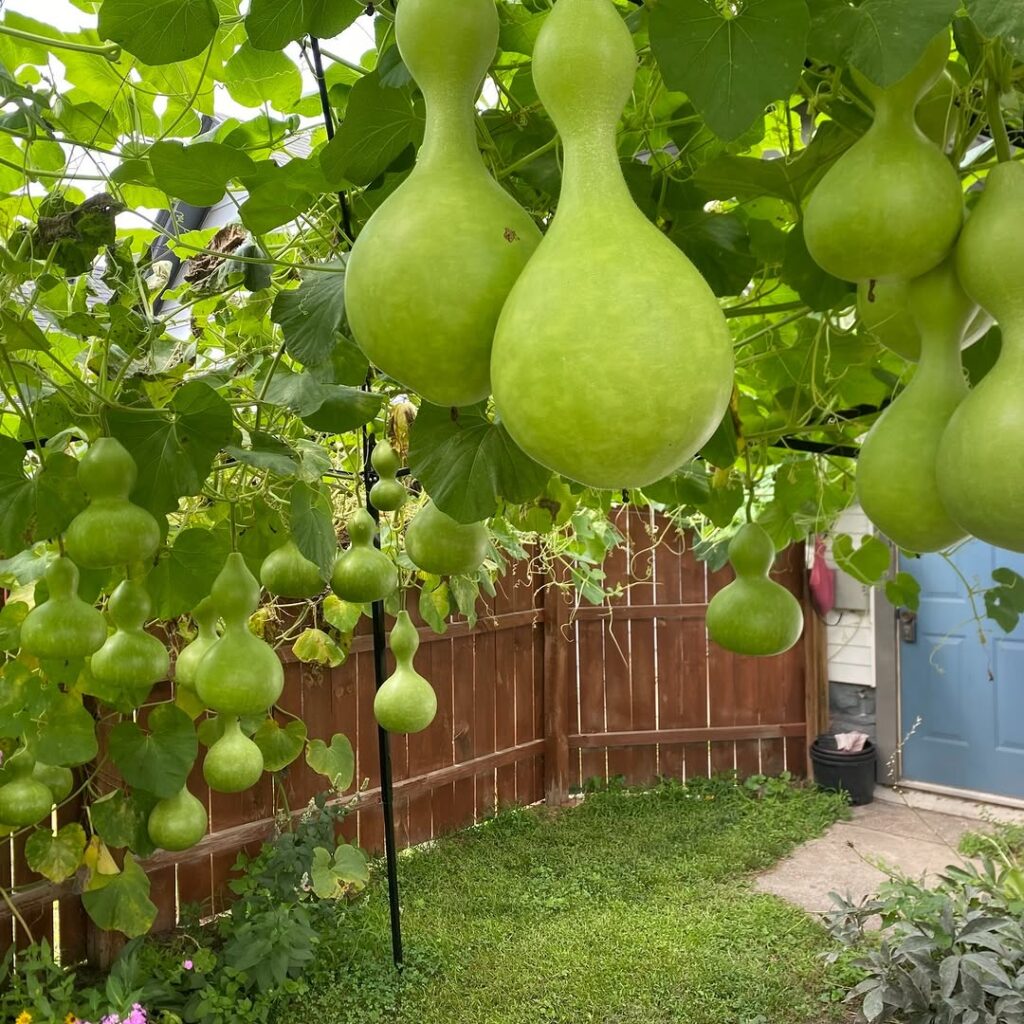When Rachel Pauli invited Winona residents to participate in Artistry in Agriculture, she was testing a theory: that an overlooked, ancient medium could bring together people who might never otherwise meet. Over 100 community members proved her right.

The project unfolded across two Saturday workshops in February 2025 at the Winona Public Library. Participants ranged from small children to elderly residents, including people with limited vision and varying cognitive abilities. Each person decorated small gourd shards grown in Pauli’s own backyard, using whatever materials and techniques they wanted. No artistic experience required. No limitations on what they couldcreate.
“I had no idea what this was going to look like,” Pauli admits. “I had no parameters on what people were going to do with the colors or anything like that. It was just kind of a leap of faith that I’m gonna get what I need from every single thing that comes in.”
After the workshops, Pauli faced the technical challenge of assembling more than 100 individual pieces into a unified work. Drawing on her jewelry-making background, she used copper wire to stitch it all together, piece by piece. The result: Gourgeous Winona – a large-scale mosaic depicting Sugar Loaf Bluff. When it was unveiled on February 22 in the Winona Public Library’s Bell Art Room, participants recognized their work transformed into something larger. Many were moved to tears. “I did that,” they said, seeing their small decorated shard as part of the bluff’s landscape.
The choice of gourds was deliberate. Pauli, who has autism and describes social interaction as difficult, needed a medium that could accommodate everyone. “I have trouble honestly connecting to people and relating to people,” she explains. “Creating a space where that’s adaptable and just joyful for anybody that wants to come in—you don’t have to be good—that’s what I wanted.”

Gourds deliver on that promise. They’re durable enough for small children to handle, tactile enough for people who process information through touch, and forgiving enough for first-time artists. “It’s sturdy as all get out,” Pauli notes. “I had people who didn’t have very much sight ability working with the gourd. I had very old people, very young people, just all sorts of different physical abilities, cognitive abilities, still just being able to have abundant joy interacting with that medium.”
This accessibility matters to Pauli personally. Growing up in Madison, she attended art fairs where her mother cautioned “don’t touch”—a standard museum protocol that excluded her way of learning. “I’m a person that if I’m going to experience something, I have to touch it, I have to smell it, I have to be able to interact with it,” she says. Pauli’s gourd project facilitates those types of interactions.
The project also tapped into something deeper. Gourds appear in every culture globally, used for everything from utilitarian containers to ceremonial objects. “It belongs to every single culture that has ever existed on this planet,” Pauli observes. “I’ve yet to find a culture that hasn’t utilized gourd in some way, shape, or form.” During a museum internship, she studied collaborative quilts made by women over generations, each stitch representing connection and shared labor. Her mosaic follows that tradition—individual contributions creating collective meaning.

The finished mosaic remained on display at the library for two months but the effects extended beyond. A Winona State student documented the workshops photographically for her communications coursework, creating a visual record of the process. Local schools began contacting Pauli about educational programming. Recently, 20 homeschoolers visited her studio for a two-hour workshop on gourd history, sustainability, and community art. These opportunities emerged directly from the visibility the mosaic project created.
“For someone who for very many years wanted to nope out of this whole place and didn’t think I had a place in it,” Pauli reflects, “I want to spread that word that everybody does have a place.” The mosaic—100+ individual expressions wired into one landscape—makes that abstract idea concrete. Each participant literally has a place in the mountain. Their mark is permanent, visible, and necessary to the whole.
Pauli continues developing this practice, exploring how accessible materials and inclusive processes can build connection in places where it’s hard to find. She’s learning about additional programming opportunities and refining her workshop approach based on what worked in February. The gourd mosaic project wasn’t an endpoint. It was proof of concept.
Rachel’s gourd mosaic is currently seeking a permanent home. If sold, proceeds will return to the Winona Public Library that hosted the workshops.
Find Rachel on Instagram, Facebook, or visit her website.